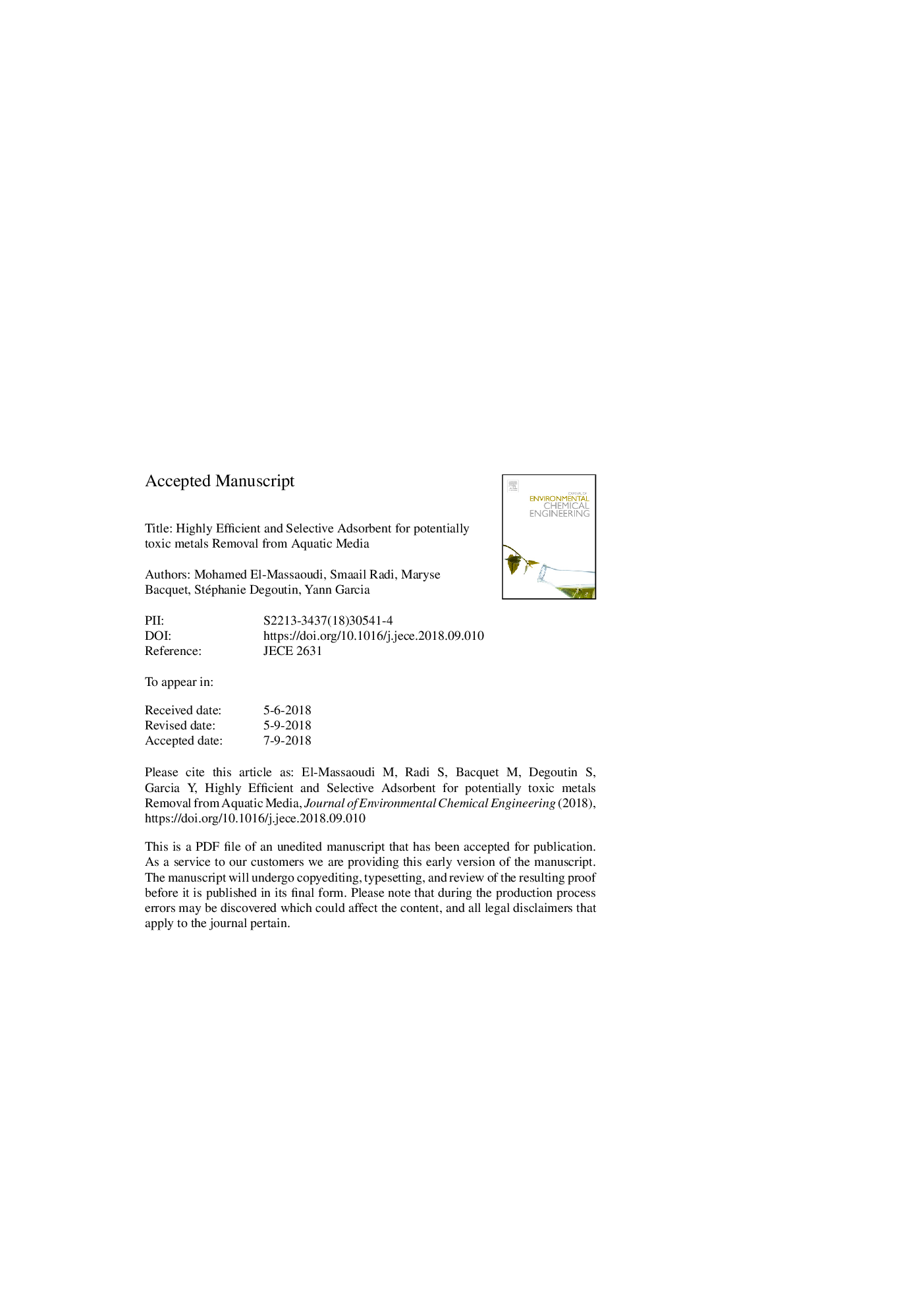| Article ID | Journal | Published Year | Pages | File Type |
|---|---|---|---|---|
| 11028958 | Journal of Environmental Chemical Engineering | 2018 | 42 Pages |
Abstract
Efficient hybrid materials based adsorbents are highly recommended for potentially toxic metals removal from polluted water media. Herein, novel silica particles modified with a new bispyrazolylpropane Schiff base were synthesized and characterized using relevant physical techniques. The resulting hybrid material (SiNAL3) was studied for its ability to uptake ZnII, CuII, PbII and CdII ions in aqueous solution via kinetics studies. The maximum adsorption capacities of SiNAL3 for ZnII, CuII, PbII and CdII were approximately 1.23, 0.32, 0.29 and 0.23 mmol gâ1, respectively, with an equilibrium reached after only 25 min for all metals. The adsorption process was found spontaneous and endothermic. Interestingly, our hybrid material could selectively adsorb ZnII in the presence of other metal ions from an aqueous solution, a useful property which was applied to real water samples. The adsorbent can be easily reused with no significant decrease in adsorption capacity after not less than five adsorption-desorption cycles, demonstrating its high stability.
Related Topics
Physical Sciences and Engineering
Chemical Engineering
Chemical Engineering (General)
Authors
Mohamed El-Massaoudi, Smaail Radi, Maryse Bacquet, Stéphanie Degoutin, Yann Garcia,
